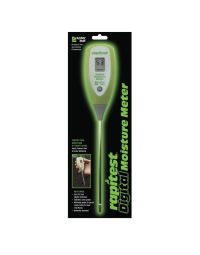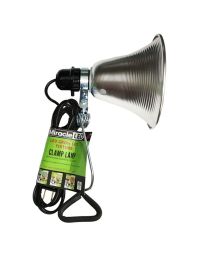Once the weather cools and the snow starts to fall, most gardeners turn to their houseplants for our “green fix”. Keeping houseplants healthy in our dry indoor air and limited sunlight can be challenging.
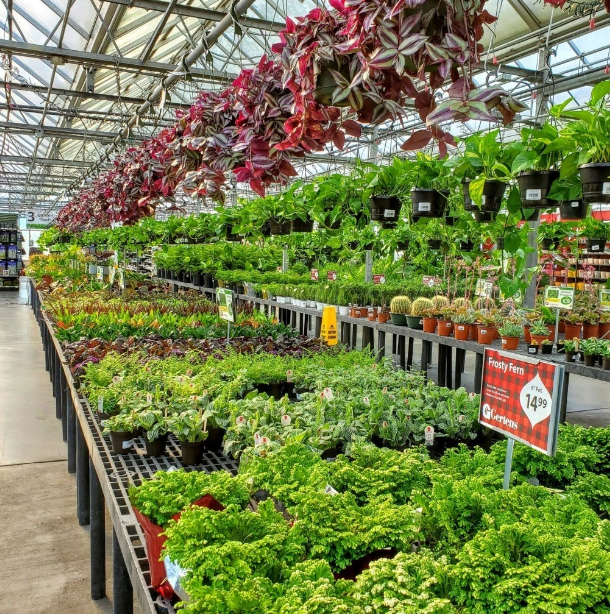
Houseplants offer many health benefits
Houseplants offer many health benefits, from cleaner air to beating the “winter blues”!
Countless people walk through our doors this time of year, take a deep breath, and sigh. Then they head for the plants. When asked if they need help or if they have questions, most just shake their heads and say that they just need a little bit of spring to help get their gardening fix. Houseplants can shake the winter blues!
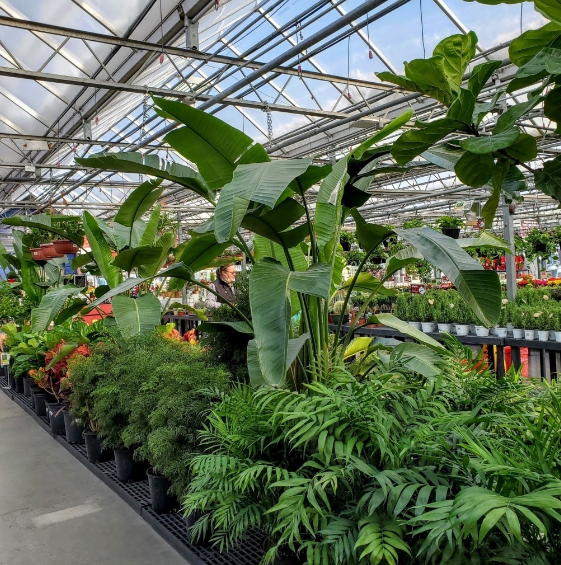
Besides winter therapy, houseplants have many other benefits. They clean the air, brighten dark corners and provide color, texture and interest to your home.
Houseplants have a few basic needs:
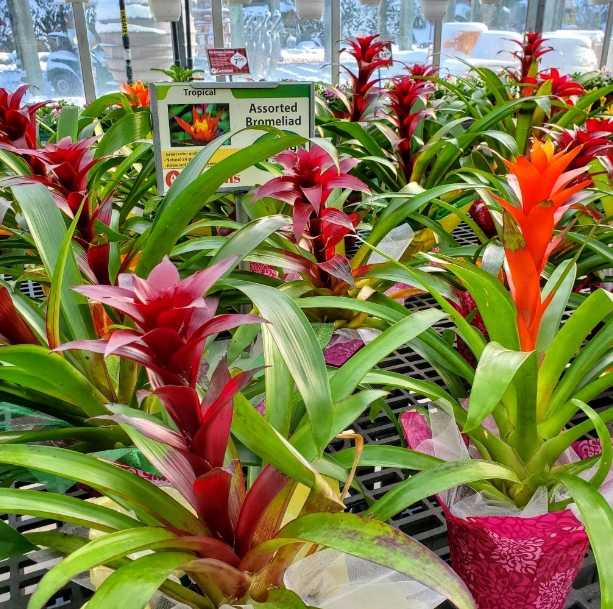
Warmth
Most houseplants are tropical so temperatures are important. While most of our homes are warm enough (although cooling it off by a few degrees at night would actually help our little green friends), the air becomes dry in winter. How many of you have cracked skin?!? Most common houseplants dislike hot dry conditions. They prefer cooler, moister conditions than is typical in our homes at this time of year. Tropical areas are generally warm and humid during the day, and much cooler at night. Our homes tend to keep roughly the same temperatures during the day and night, and with our methods of heating, the air becomes much drier than most plants need. Dropping the temperature as much as 10 degrees at night will keep your houseplants happy and your heating bill lower. For example, Phalaenopsis(or Moth) Orchids tend to bloom with short days and cooler nights!
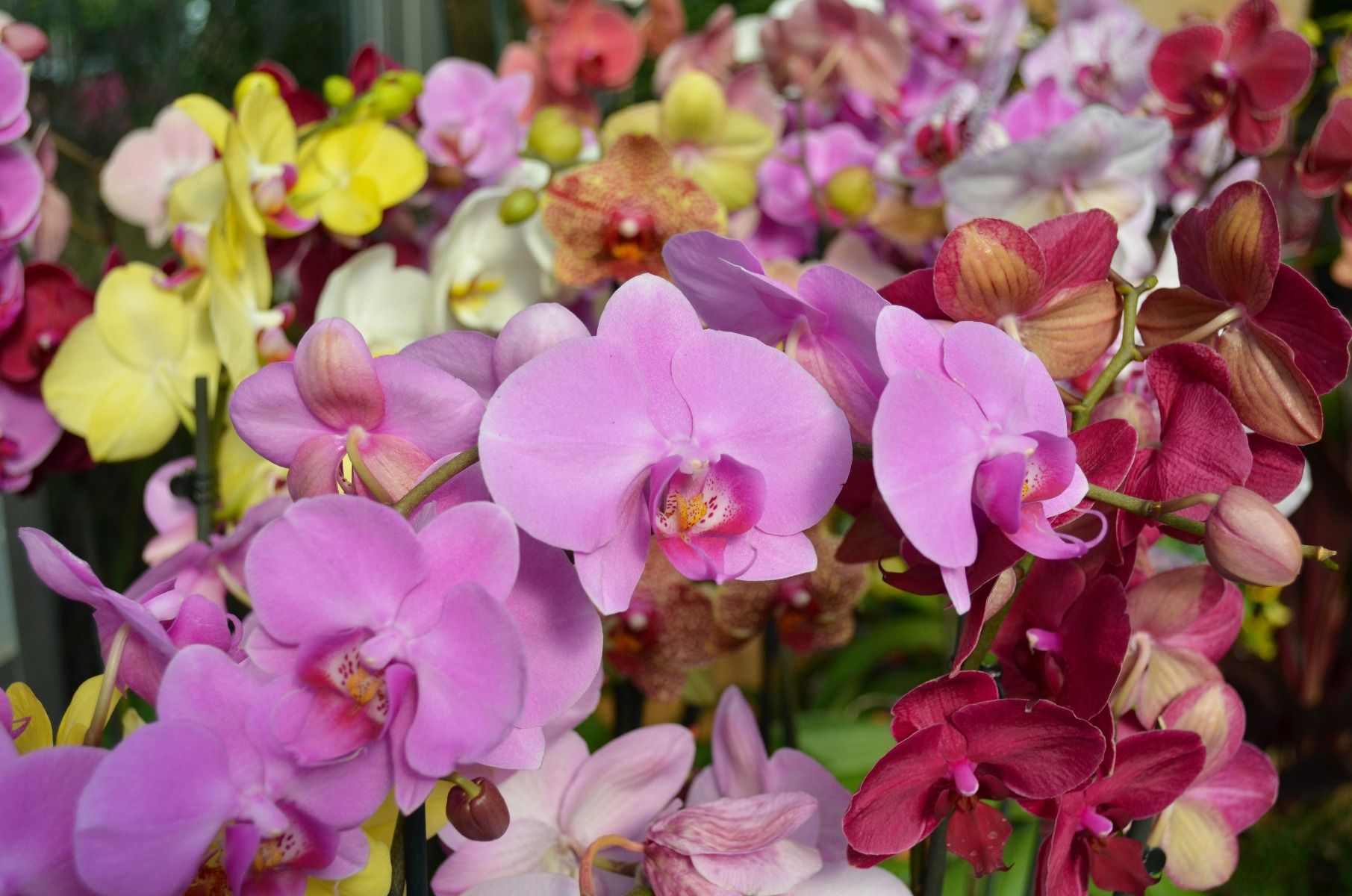
Photo of Moth Orchid
Light
Plants need light, but different plants have different requirements. Try to match indoor plants to the environmental condition of your home. There are 3 key aspects of light to keep in mind: Intensity, Duration and Quality.
- Intensity is the strength of the light. An example would be a south facing window with full sun, compared to a north facing window with no direct light. The light may come through the window for the same amount of time, but the south window has a much more intense light than the north window.
- Duration is the length of time the light is available. Compare an east window with a south window. The east window will get bright light, but for a much shorter period of time than the south facing window.
- Quality of the light. While natural sunlight is best, there are many artificial light sources for winter.
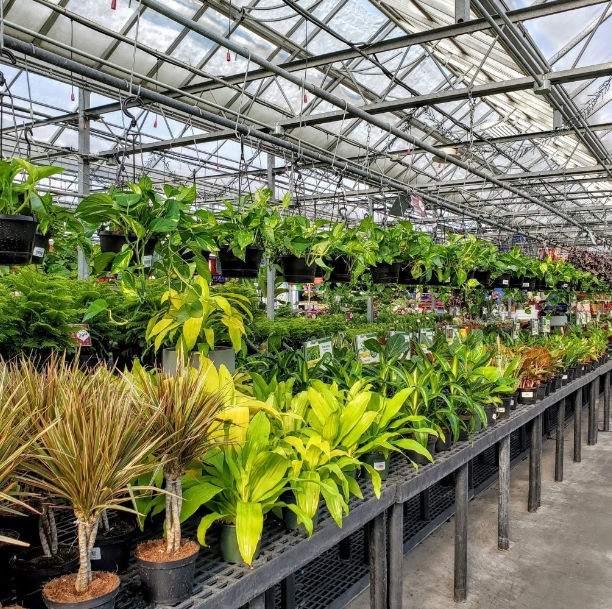
During the winter, our days are so short that there is never enough light. You may have the best location in front of the proper windows for each plant you own, but the angle of the sun and the length of the day rob the plants of their much needed intensity, duration and quality. Because of this, our plants still suffer and drop a few leaves here and there as they try to accommodate for the lack of light. Don't be alarmed! It's winter and they will return to normal when spring comes. Using a grow light will help to counteract the lack of light during this time of year, but make sure that you are familiar with the different types of lights and how they are meant to be used. There are many options to fit your home.
Easy to use soil moisture and light meters can help ensure your houseplants receive the proper water and light.
Clean the leaves
Another often overlooked secret is to clean the leaves. Just as dust accumulates on your furniture, it does on your houseplants. Dirty leaves block sunlight. Wipe the leaves with a damp sponge, or if your plant is easy to move, simply put it in the shower for a while. Keep the temperature of the water tepid, not warm or cold. For plants whose leaves are textured, try using a soft toothbrush to clean the leaves.
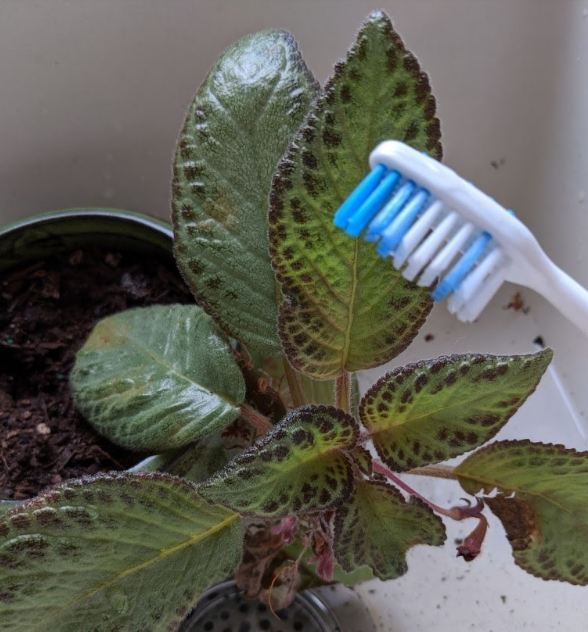
With textured leaves it’s best to gently use a soft tooth brush for cleaning
Water
Plants tend to need less water during the winter than when they are actively growing, however, different plants have different water needs! During their active growing season, most tropical plants need moist, but not soggy soil. Knowing that balance can be tricky as each plant is different. They use different amounts of water based on how they are potted, how much sun they get, how warm they are...etc. The only way to truly know the answer to that question is to know your different plants needs and then observe the plant in its new environment and be ready to react to changing conditions. Ask our customer representatives when purchasing your plant. Some plants need to dry out slightly between watering, some need to stay moist at all times, others need to dry completely between waterings. Easy to use soil moisture meters can help you ensure your houseplants receive the proper water amount.
Sometimes we forget to water until it's too late. If the soil has dried out completely and is shrinking and pulling away from the edge of the pot, it is unlikely to get properly re-hydrated with regular watering methods. The best thing to do is fill the sink or a pail with tepid water and plunge the whole pot under water. It is really best if the water is over the surface of the soil. If it floats, hold the entire pot under the water surface or weigh it down so it remains submerged. Leave it submerged until it stops bubbling (a few extra minutes won't hurt). Drain and if the plant is wilted, set it in a cool shady spot to recover. Remember that plants don't need as much water in the winter as they do during the summer. Keep an eye on your plants and adjust their care accordingly.
Humidity
Heating in our homes dry out the air to desert-like conditions. During the summer most homes (without air conditioning) have humidity levels in the 40-60% range. This is perfect for indoor plants. It is dry enough to inhibit fungus, but moist enough to keep them comfortable. During the winter however, with our heaters blazing, it is common for humidity to drop below 30%. Desert air has 10-30% humidity...much too dry for all but the cactus and succulents.
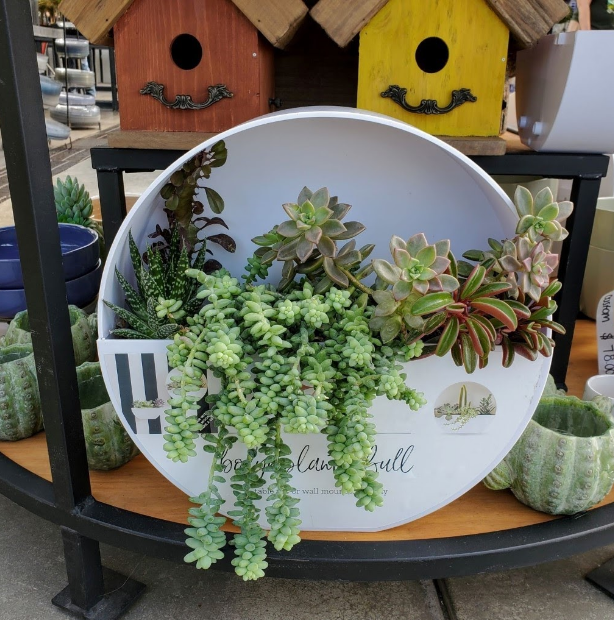
Rooms, such as the bathroom or kitchen, which tend to have a little higher humidity, are a little more plant friendly. If you want to keep your plants in drier areas, there are some things you can do. Adding a humidifier to a room will definitely help, but there are easier ways.
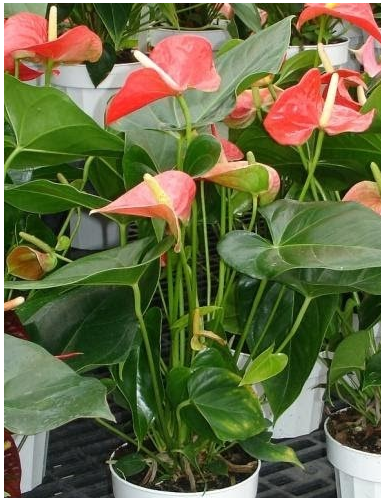
Humidity can be key for keeping plants healthy in winter.
- Group plants together. There tends to be more moisture around the pots (full of moist soil), and the air that is trapped around their leaves. Be careful with plant groupings though. They don't like to touch each other and need some “personal space”. Close but not touching will keep them happy together.
- Misting plants can help to raise the humidity. Make sure to only mist plants in the morning, so that the leaves can dry before nighttime. Don't forget to mist both sides of the leaves, not just the top. Misting also helps to prevent spider mite infestations; mites love dry air!
- A pebble tray is the best way to raise the humidity around a plant. A pebble tray is simple. Fill the tray so that the plant sits on top of a layer of small stones rather than the base of the tray. Fill the tray with water and with the plant on top of the pebbles it won't be sitting in the water. As the water evaporates out of the tray, the air surrounding the plant will be humidified!!! Use a cookie tray to make groupings of several pots together in a single tray.
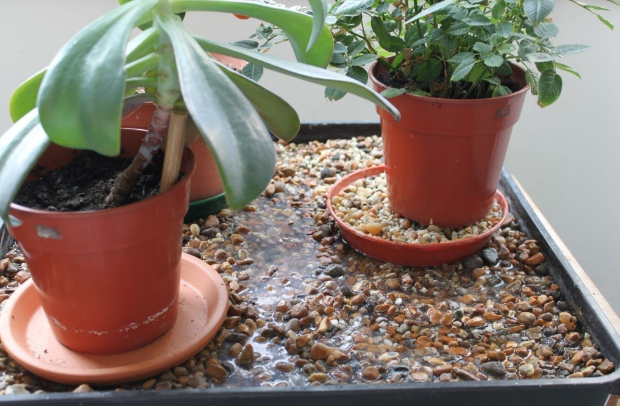
Rest and Feeding
Ahhh, just like people, plants need rest too! After a long season of growing new leaves, branches or perhaps flowers, plants need a break during the winter. Plants that had shiny new leaves all summer will suddenly start to lose a few leaves as they days get shorter. The leaves may start to turn yellow in the middle of the plant, or maybe they simply look dull and not as happy as they did in the spring and summer.
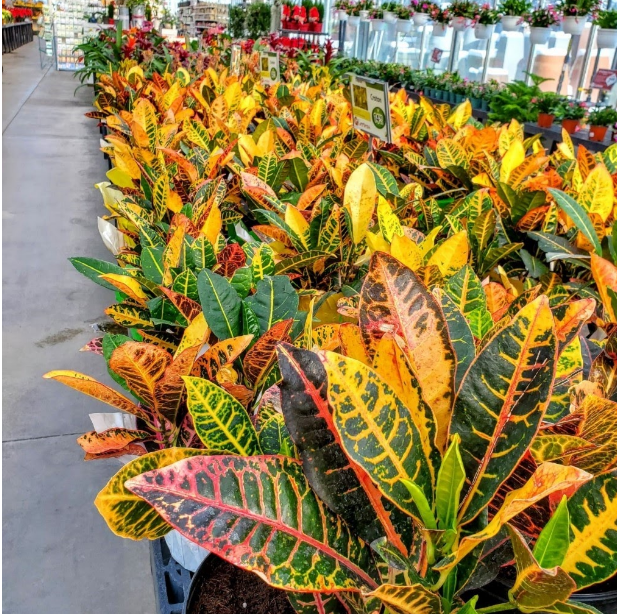
Photo of Croton Plants
Resist your first impulse to water more and fertilize. Too much TLC can kill your houseplants. Plants need much less food and water during the winter in order to remain healthy. Only feed your plants when there is active growth; this pretty much eliminates the need for fertilizer during the coldest and shortest days of winter. If fertilizer is necessary, it is best to only use about half as much as the directions call for. Once spring and summer arrive, go back to full strength. NEVER feed a plant that is very dry. If the plant is dry, water it well and then feed it a couple of days later. Plants that are stressed should not be fed and if there is ever a doubt, just skip the feeding. Plants will do much better for much longer without food than with too much food.
Repotting
Winter is not the time to be re-potting, but we can't help it when we find the perfect pot! Remember that the plant is resting during the winter and you don't want to encourage new growth when the light requirements can't be met. Don't hesitate to buy the new pot, just set the plant in the container until you can re-pot it in the spring. Don’t put your plant in a pot that is too large. When you’re shopping for a new container, keep the size no more than 2” or so larger. If you love to redecorate with different colored pottery, you can always pot your plant in a cheap plastic pot that can be moved from container to container without disrupting the roots. You’ll cut down on the mess of repotting all the time and your plant will thank you for it!
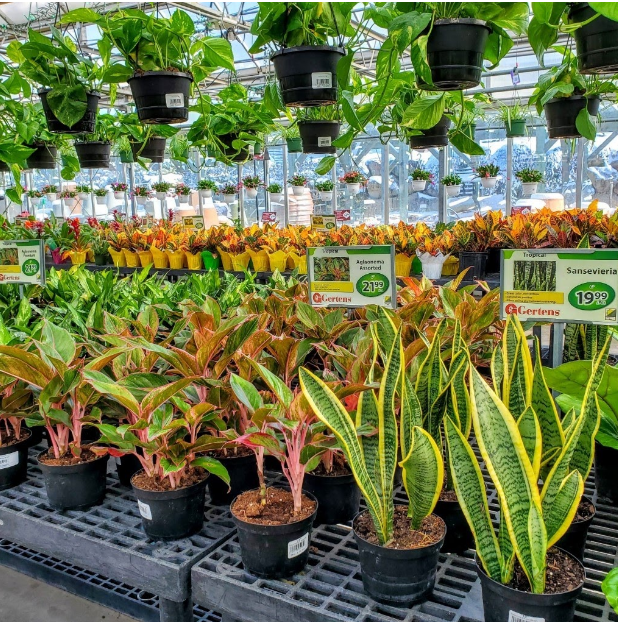
The experts at Gertens are always available to answer your questions!


